Text: Manjira Majumdar
Photos: Manjira Majumdar & Snigdha Goswami
With restriction on travel gradually easing, citizens of Kolkata are taking those wandering footstep, albeit gingerly. The winter gave some respite; when weekend getaways from the city saw hordes of travellers driving out to these for a couple of days or so.
Any weekend, any time of the year, can work out. For instance, in summers if you drive down very early mornings and return after only sunsets, it makes sense. Monsoons are good enough in ecological resorts though maybe not close to rivers. The months from October to March are the best. Many getaways from Kolkata are not as much about forts and monuments as they are about nature, or heritage. Some tourism spots have been artificially developed after being beautifully landscaped, beautiful cottages built, with all modern facilities; some being close to modest sea beaches and foothills of the mountains in tea country.
Itachuna Rajbari – Bargees or Maratha plunderers
The countryside, at one time, had old zamindari style houses built by the rich and converted into weekend resorts. One such is Itachuna Rajbari belonging to the Kundus of Itachuna, who were the local businessmen with land and property spread over the region. The film “Lootera” was shot in this Rajbari and today it’s a place that many escape to during the weekends. The vintage Rajbari has a history.
Located in the Pandua district of Hooghly, it is also known as Bargee Danga. The Bargees were once a notorious community of Maratha warriors who gained infamy by demanding one-fourth of the chauth (tax) that was to be paid to the Mughals by the Nawab of Bengal, Bihar and Orissa. This was during the 1740 and 1750, when Aurangzeb’s power was on the decline.
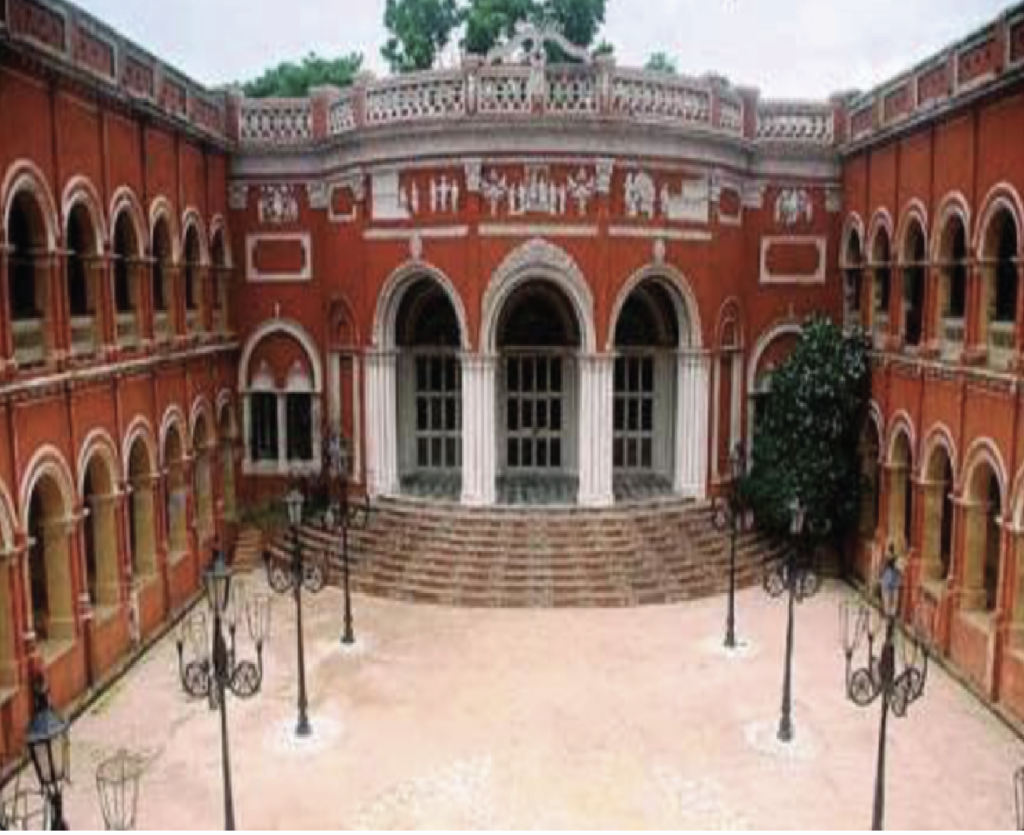
The Itachuna Rajbari was built by the ancestors of Bejoy Narayan Kundu, the name Kundu being derived from Kundan, a faction of the same Maratha community that was led by Raghuji Bhosle and Bhaskar Pandit who terrorized the region. The Kundu family came into prominence during the British Raj and made much of their fortune by securing contracts of constructing railway bridges.
This is a fascinating vintage Rajbari laid out over beautiful lawns. It speaks of an elegant class of a bygone age. Forced to make this into a home stay to “meet the huge maintenance cost,” according to Dhruv Narayan Kundu, the present owner.
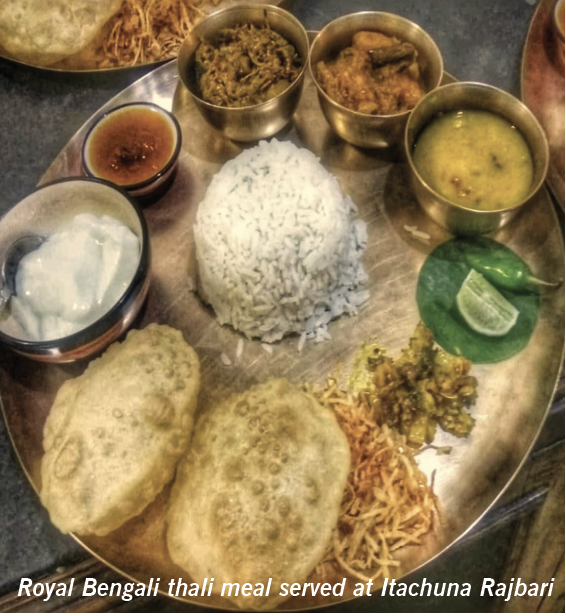
The property boasts of well-appointed rooms that transport you to a leisurely life. The architecture of the Bengal Rajbari is usually of the Paanch Mahal design: 5-layered – Andar Mahal (inner quarters); Bahir Mahal (outer quarters); Bagicha Mahal (lawn/garden); Kachari Bari (office) and Thakur Bari (small temple).
The main attraction though is the gorgeous inner courtyard or thakurdalan, which in this case is the houses the deity of Shreedhar Jeeu. One can enjoy traditional meals served on shiny kansha or bell metal plates, local cultural programmes and a visit to some nearby green wooded spots promising a lovely weekend. You can also travel to Itachuna by local trains on the Bardhaman line. It is steeped in history but it is just the thing that the urbanites need, from time to time, to recharge their batteries to put behind the frenzy of city life.
Purulia – Land of Flame of the Forest
Purulia is rugged terrain dotted with hillocks, sharing the santhal tribal land with neighbouring Jharkhand. The best time to visit is mid-March, when the flaming palash blooms. The scientific name notwithstanding, suffice to describe this tree as the Flame of the Forest when it blooms during the advent of basanta/spring
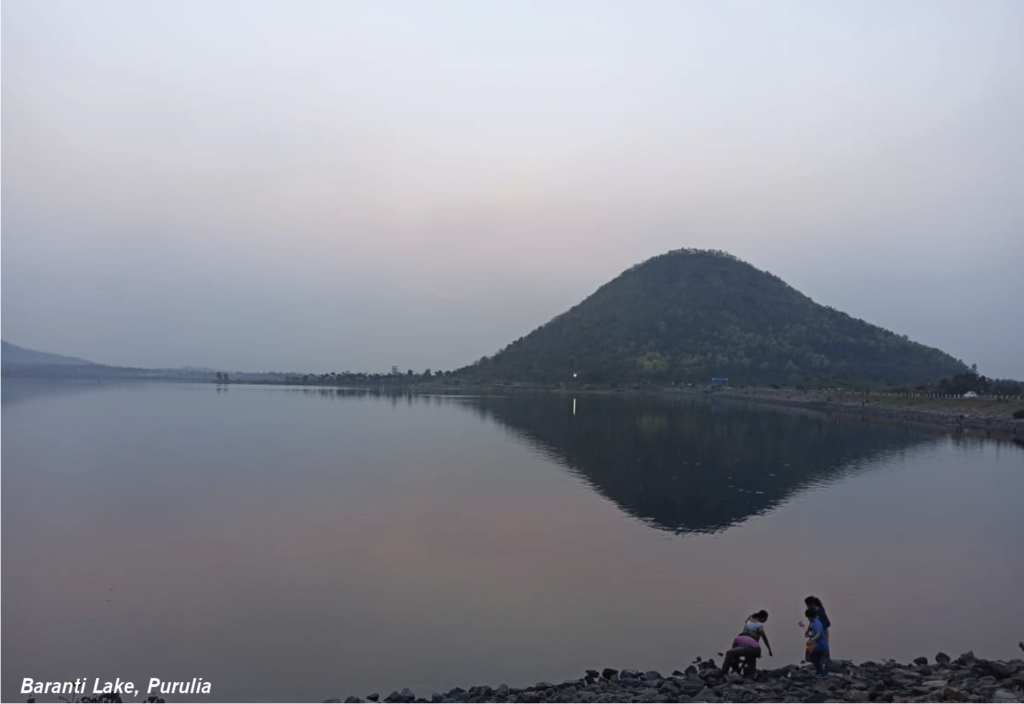
In mid-March, ten of us – men and women – boarded the Chakradharpur a special train from Howrah station to reach Barabhum station the next morning at 7 am. You can also get down at Purulia in case your destination is straight to Ayodhya. But we planned to visit Matha Pahar adjacent to Ayodhya to enjoy the local cultural festival of Chou dance and pre Holi or dol as it is known in the eastern region organised by Malgudi Resorts and caretaker Girish Ghosh. By road it would take about seven hours or so. .
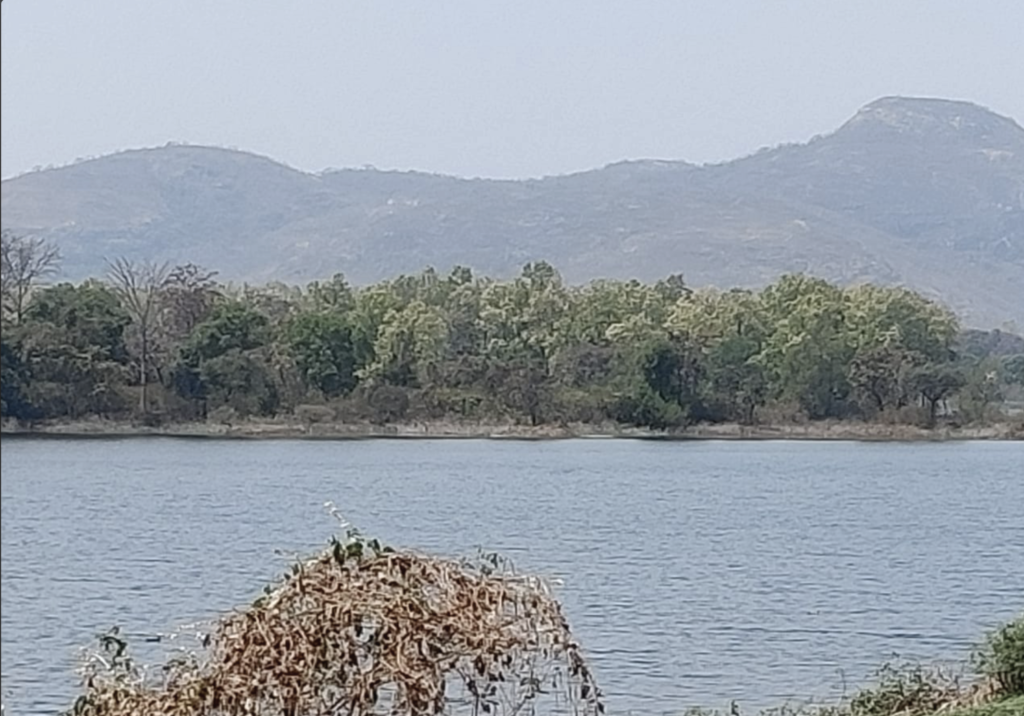
Malgudi Resorts at the lap of Matha Pahar was just half an hour’s drive from Barabhum railway station. The resort has around six hut-shaped AC rooms surrounded by palash and shimul tress in full bloom. After a pure Bengali breakfast of luchi (poori), aalu sabzi, and special jalebis, and a fun selfie session we ventured out.
We headed towards Ayodhya Pahar, lower and upper dams, Khairebera and Bamni falls. The weather was just right to roam around and after working up an appetite, we returned to Matha Resort in time for a sumptuous lunch of dal, aaloo bhaji, and a choice of fish/egg/ or bon morog chicken (jungle fowl) curry or a portion of all!
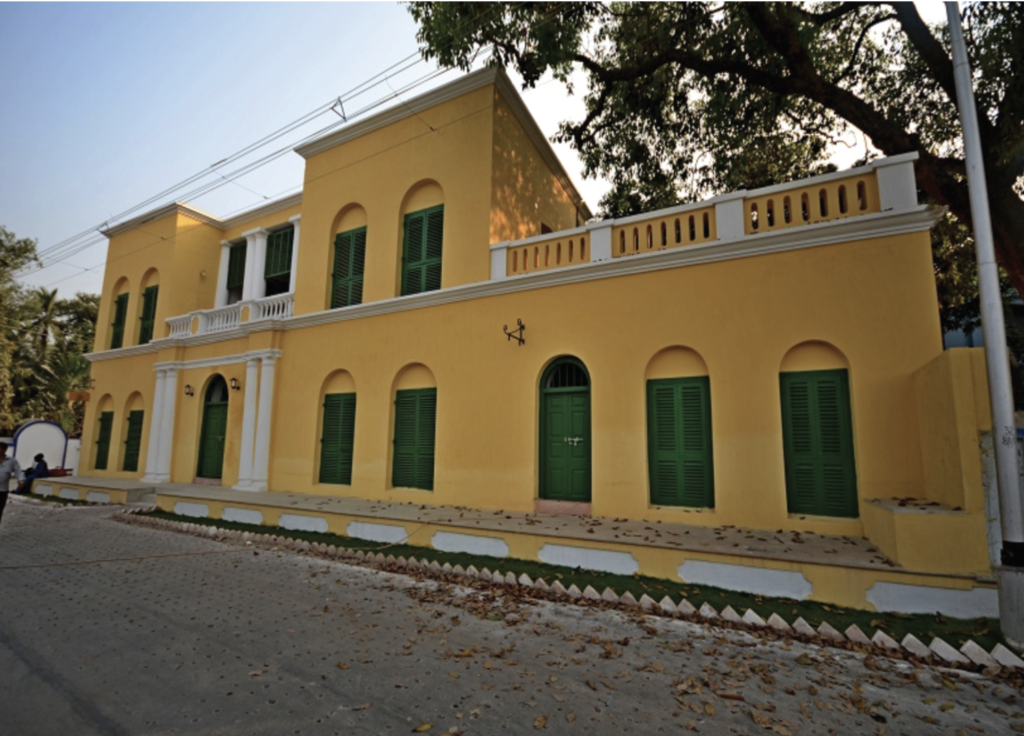
All along the journey, we simply enjoyed the pristine beauty of nature lined with various shades of green, blue water bodies and of course the orange and flaming hues of palash and yet more palash that almost resembles a forest on fire, beating the fall colours of the west.
A mini nap later we were at the Charid village known for masks used for chau dance recitals. Every home in the village belongs to an artisan who eke out livelihood by making masks that are also exported..
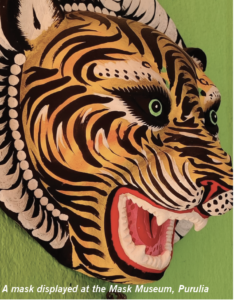
Last year and this year too, the business is low due to the pandemic. Few artisans were also working on dokra art. The WB government is promoting Purulia as a tourist destination, but they also need to spare a thought for helping these artisans before their mask-making craft is snuffed out forever. However they do have a museum where the tribal crafts of the region are displayed.
After enjoying a beautiful sunset behind the Matha Pahar we were back to the resort to enjoy the cultural evening of local Chou dance and some baul artists. The sunrise next morning was a sight to behold. After breakfast we checked out from Malgudi Resorts and started on our drive towards Muruguma Lake. This road meandered through winding bends lined up with the orange hue of palash touching the blue sky.
Muruguma Lake is the best scenic location in Purulia with a wide natural water body and a dam. A few resorts are also available at this site. Our next destination was Garpanchakot Forest Resort, two hours away by road and where we had daal bhaat, aalu posto, fish curry and omelet in gravy for lunch. There was just about time to rush to Baranti Lake to watch the famous sunset. The Sun sets over the lake behind the hills around reflecting the shadows on the lake. It’s a picturesque view that remains etched in our minds. The return journey from Baranti took us to a few temples here and there, such as Jai Chandi Pahar being the best atop the hill.
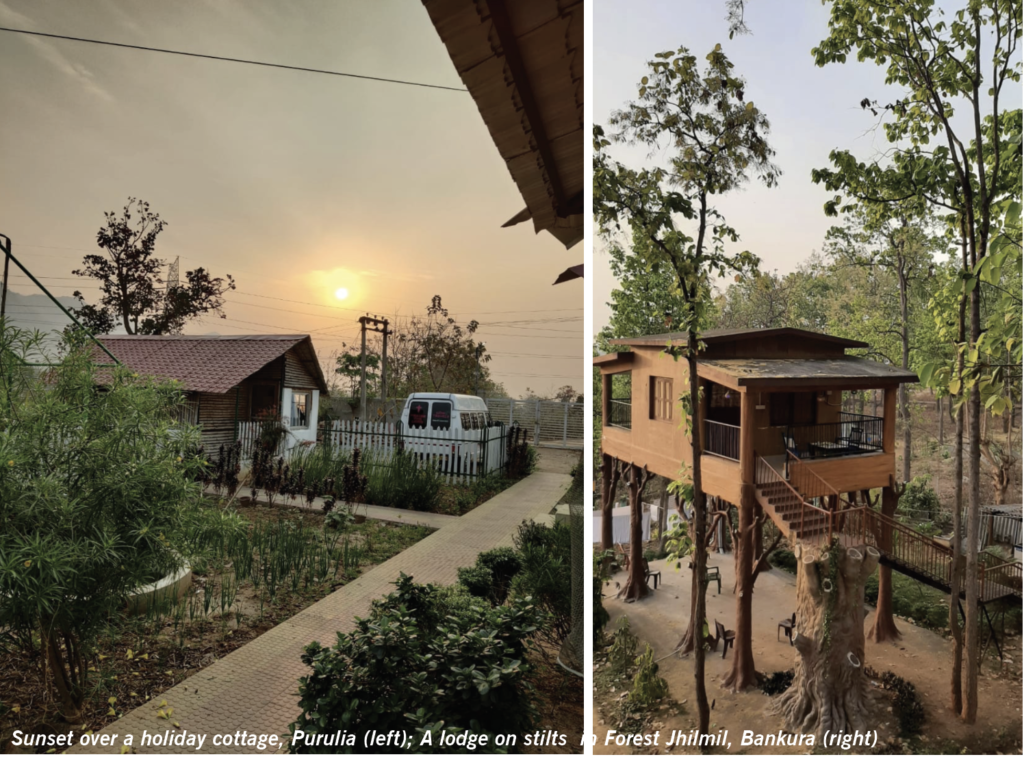
The area is beautiful with the Ras Mandir being the only construction which has stood the test of time though the terracotta on its walls is sadly missing.
Half an hour at the site and we were on our way towards Asansol. This took us around two hours where we also had our lunch at an wayside restaurant and then boarded our Volvo which brought us back to Kolkata in exactly four and half hours.
European vintage – Frederiksnagore
From 1755 to 1845, Serampore was administered by Denmark under the name of Frederiksnagore. The main trade was in fabrics and the Dane established trading posts in parts of Andhra Pradesh and on the Malabar coasts, as well. The flourishing trade attracted merchants and many of them built their European villas along the banks of the river. With money comes a desire to leave behind footprints in grand buildings and churches. St Olav’s or Olaf Church of Denmark and Norway, was built here almost 200 years ago.
A part of the “Serampore Initiative”-launched by the National Museum of Denmark (NMD) in 2008, the restoration of the Church, A Lutheran Protestant Church in ruins, began in 2015 and was completed in 2016. The Church known for its bell tower clock and is consecrated to Christian vii, the then King of Denmark. It is believed that Serampore’s grandeur was even more than Chandannagore. Well-heeled residents built villas on the river banks and the town attracted tourists who stayed at the tavern. It was in 1786, a British gentleman opened ‘The Denmark Tavern and Hotel”.
From an advertisement in Calcutta Gazette in 1786 printed: “Gentlemen passing up and down the river maybe accommodated with breakfast, dinner, supper and lodging, and may depend on the charges being very reasonable….also liquors sold by the single dozen, for ready cash. A good Billiard Table and Coffee room with the Newspapers etc.”
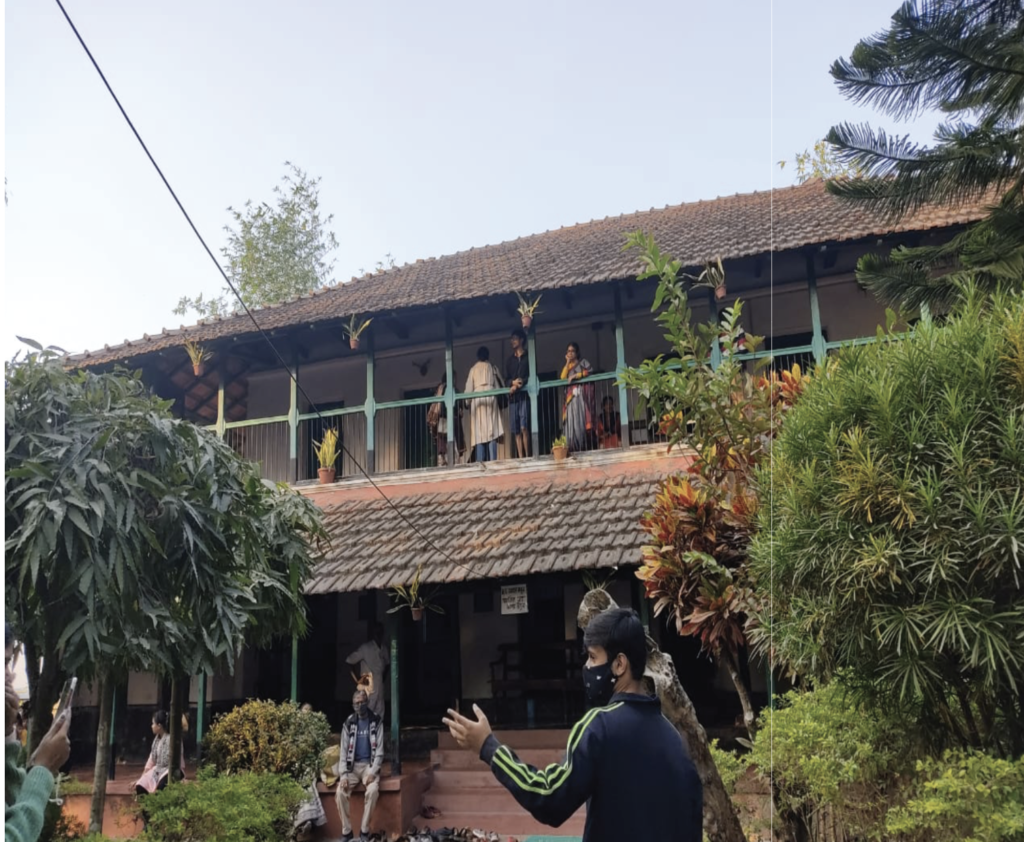
An hour-and-a-half-drive from the city takes you to Serampur; the routes are well delineated from the different points of the city – south, north, east and west.
It is a small town like any other, with narrow roads, but the little Danish corner with St Olav’s church and a few other colonial edifices, reminds you of the European footprints.
Today Serampur is known for its block prints, a place where William Carey set up its first printing station to print the Bible into Bengali! The best place to have a meal during your visit is at the Tavern itself. There is an eatery run by The Park or better still, book a room in it, to spend the weekend. You get the view of the Ganga for free. There several are river trips which trundle past these heritage buildings, beautifully lit up at nights, to give you another perspective of a trading centre connected by not sea but a river route.
Deulti – The writer Sarat Chandra’s abode
You cannot have Bengal without taking out its poets, painters and philosophers. One such is the abode of the famous writer Sarat Chandra Chattopadhya known all over India for many stories made into films. Devdas, Parineeta, Srikanta are some examples.
You reach Deulti by driving from Kolkata along the Vidyasagar Setu, or the 2nd Hooghly Bridge. It is on the Kona Highway which is en route to NH 6. You drive past Uluberia. Kolaghat, a place known for excellent hilsa fish is nearby. The village of Deulti lies at a short distance from the Deulti railway station.
Deulti is located on the banks of the River Roopnarayan. The adjacent village called Samtaber was the house of the late author. There are various resorts to spend the weekend in we had researched from before, so you can take your pick from Nirala, Prantik, Rupashi. Or make a day trip for there are various plazas along Kolaghat, which offer multi-cuisine. The serene village on nature’s laps is abloom with a variety of flowers in winter and is a riot of colours amid various shades of green. A panoramic view of the natural surroundings, the lilting calls of the different kinds of birds early in the morning almost lift you spiritually that only nature can! Crisscrossing emerald paddy fields, can take you to the banks of the river. There is a beautiful temple of Radha and Madangopal (Krishna), beautified with terracotta decoration and the atchala or eight-roofed temple was constructed in 1651 AD by the local zamindar, called Mukundaprasad Roychoudhury.

There are specific timings at which the author’s house is open to the public. The restored house incorporates some Burmese house styles because it was there that the prolific writer, Sarat Chandra Chatttopadhyay had spent much of his influential years. However, this particular kuthi or house is held in great respect by his fans because the above mentioned works and more were penned here. Deulti brings heritage and culture together in an idyll setting.
Jhilmil – the Ecology Resort
Imagine waking up in a tree house to the chirping of birds, a stillness that comes with time halting for there is nowhere you have to go, or no deadline you have to meet. For that you have to travel to Jhilmil forest in the district of Bankura.
But first, a few words about the district of Bankura, located in the south-western parts of state, has a history. Known for its stylized Bankura horse, the region can be traced back to the Mahabharat, when it was known as Sumhobhumi. It is said that Veer Hambir was the 49th king of the Malla dynasty and Veer Bankura was one of his two sons. Whatever, maybe the past, today the Cottage Tree House – Rimil – amid the lush green tribal villages, yet with all modern amenities.
Rimil Eco Tourism Center is a government guest house with all its amenities, clean bathrooms and simple yet tasty meals. It is located in Jhilmil forest range. By train it takes about three-and-half-hours to reach Jhilmil area. By road double that time. Once there the green foliage, season birds and river, literally means sparkle in Bengali. The road from Ranibandh to Jhilmil has dense forests on either side, the micaceous soil flickers with sun beams at daytime.
Till we travel long distance or overseas, this is a good enough time to discover some gems in our backyard. All within the state, all it takes is some quick planning to book beforehand, comfortable transport and a weekend with friends or family to enjoy the simple pleasures of life.

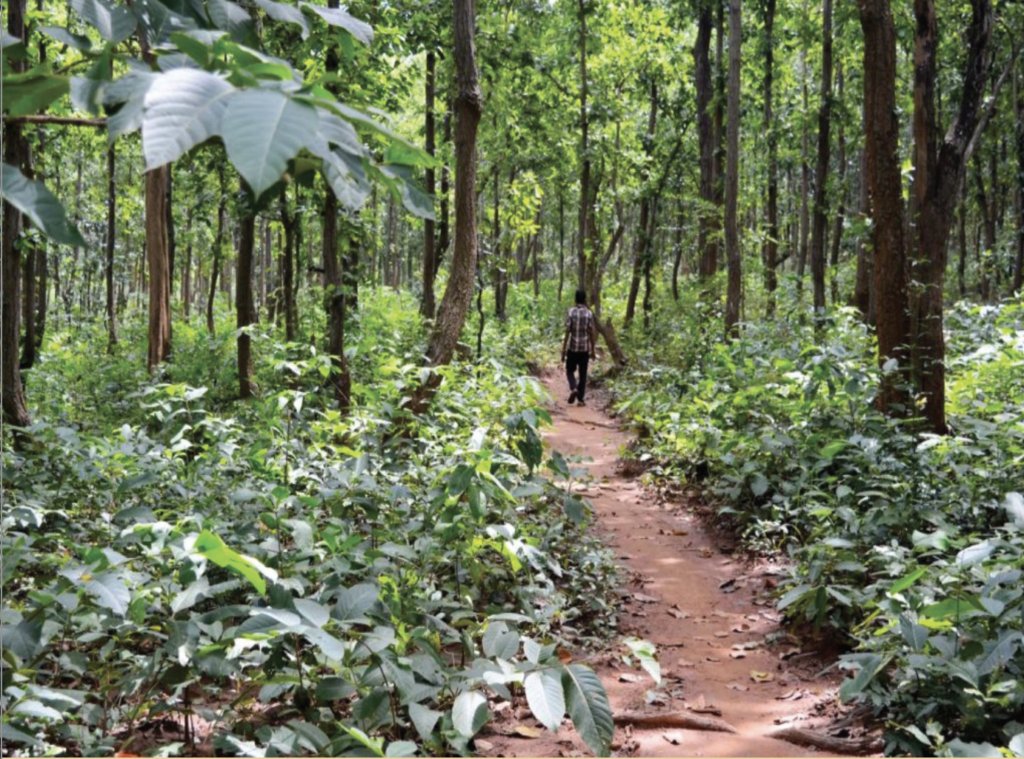
 [/column]
[/column]